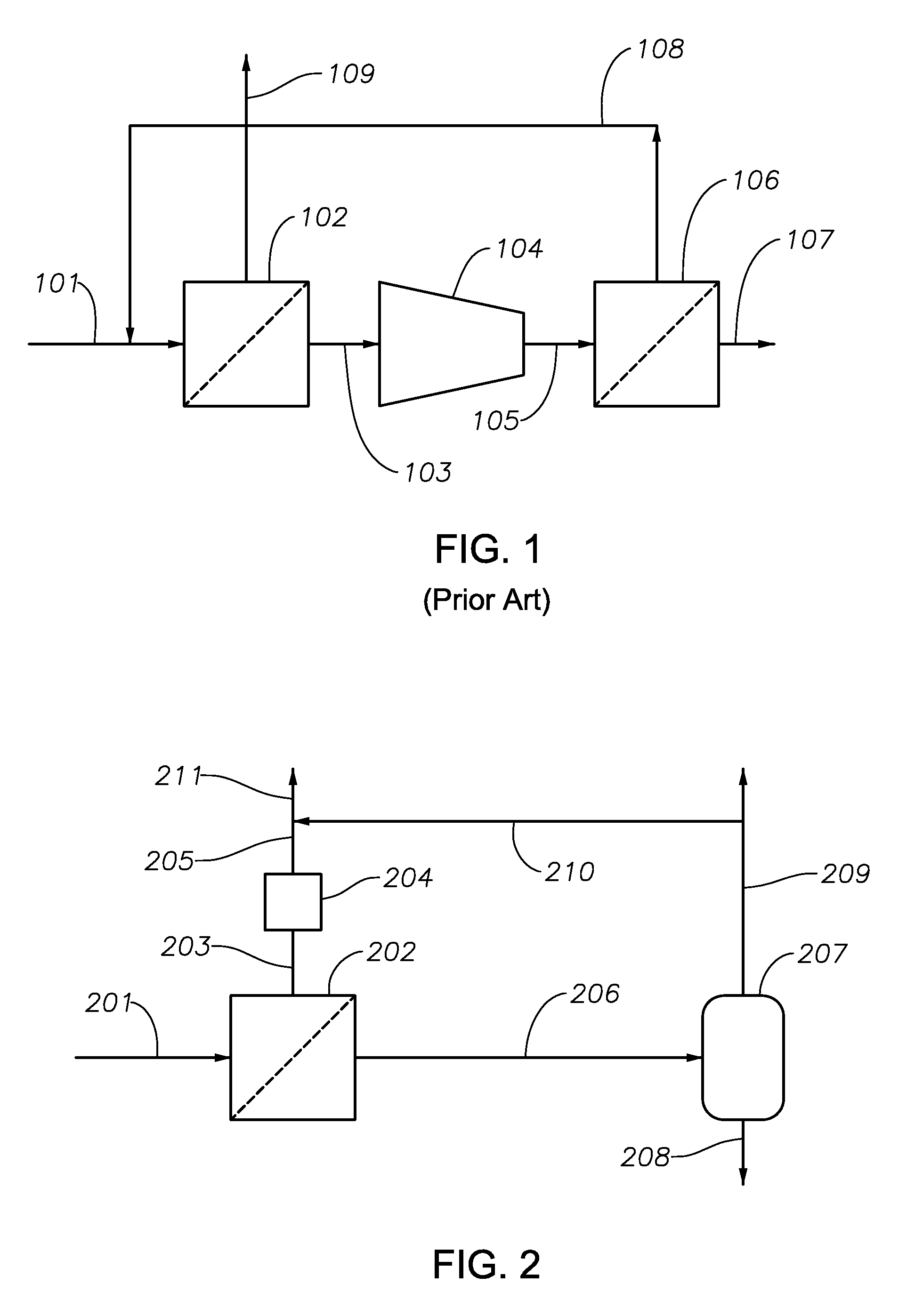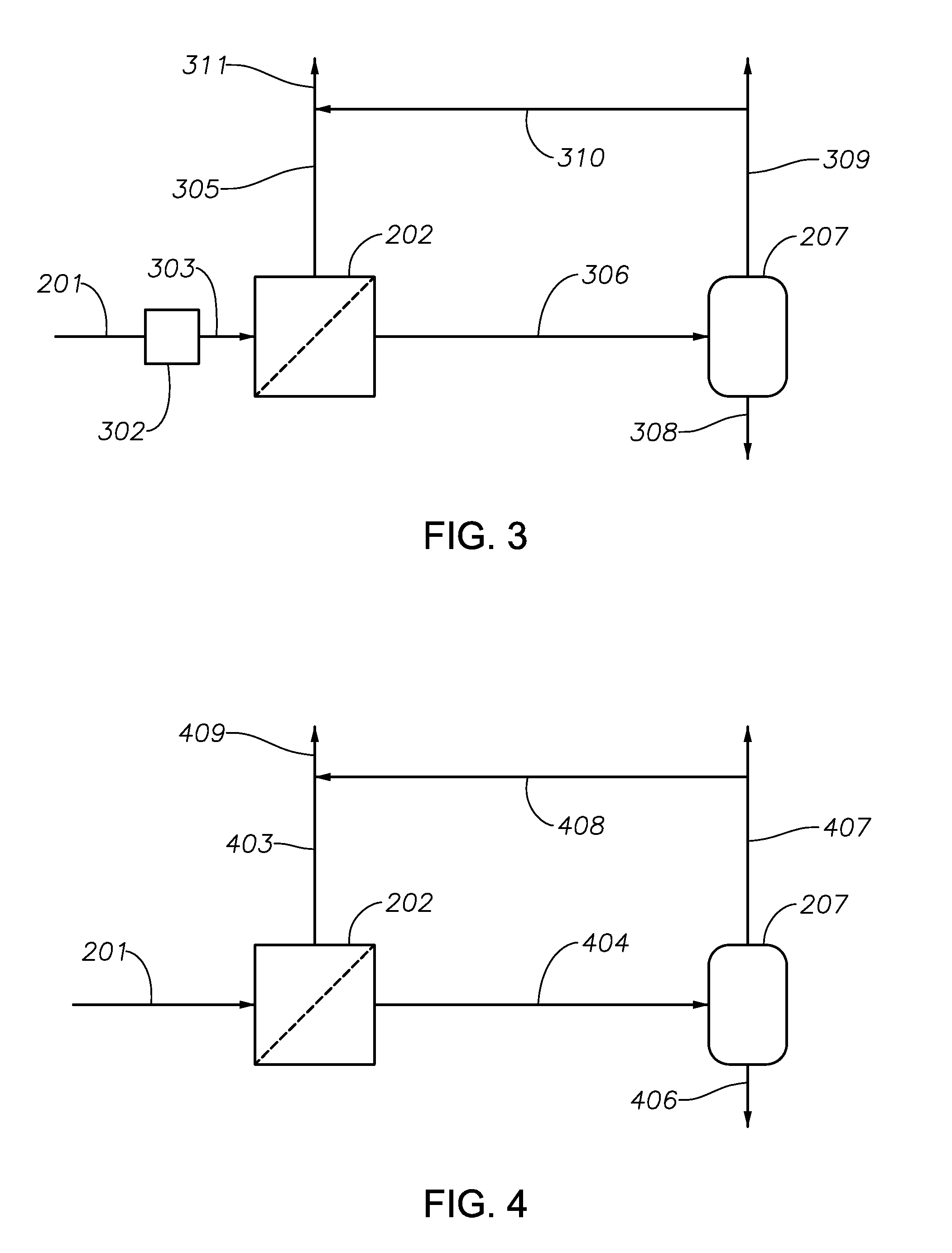Methods and systems of enhanced carbon dioxide recovery
a carbon dioxide recovery and carbon dioxide technology, applied in the field of carbon dioxide separation, can solve the problems of large equipment footprint, high energy inefficiency, and large complexity of amine systems, and achieve the effect of enhancing performance characteristics
- Summary
- Abstract
- Description
- Claims
- Application Information
AI Technical Summary
Benefits of technology
Problems solved by technology
Method used
Image
Examples
examples
[0083]Simulated examples are presented to illustrate the utility of combining the two disparate techniques (PSA and membrane separation) to achieve enhanced purity and recovery. If processing 100 million standard cubic feet of natural gas per day (MMscfd) with about 13 mol % initial CO2 contamination were required, and only a simple, single-membrane system were used, purified CH4 product is produced, but much of the CH4 also slips into the permeate byproduct gas, or “waste,” stream. And even in a two-stage membrane system with recycle, a better purified product is produced, but a secondary CO2 product is of low purity, with significant higher-value product still slipping into the CO2 product stream. This is also an energy intensive endeavor, because significant compression is required to pressurize the permeate stream in preparation for the inlet to the second membrane unit.
[0084]Referring now to FIG. 8A and Table 1 below, Table 1 shows the values obtained in a simulated single-pass...
PUM
| Property | Measurement | Unit |
|---|---|---|
| temperatures | aaaaa | aaaaa |
| pressures | aaaaa | aaaaa |
| partial pressure | aaaaa | aaaaa |
Abstract
Description
Claims
Application Information
 Login to view more
Login to view more - R&D Engineer
- R&D Manager
- IP Professional
- Industry Leading Data Capabilities
- Powerful AI technology
- Patent DNA Extraction
Browse by: Latest US Patents, China's latest patents, Technical Efficacy Thesaurus, Application Domain, Technology Topic.
© 2024 PatSnap. All rights reserved.Legal|Privacy policy|Modern Slavery Act Transparency Statement|Sitemap



